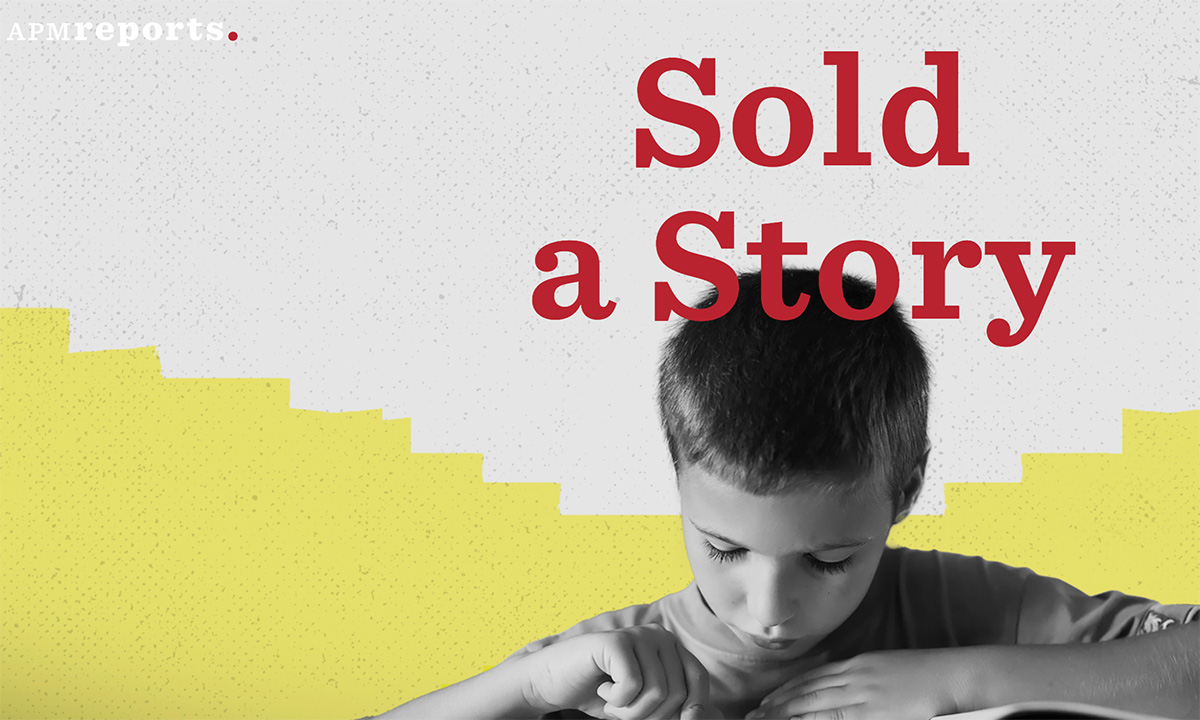Review: Why You Should Buy into the ‘Sold a Story’ Podcast
Malkus: 'Sold a Story' gives frustrated parents of struggling readers good questions to ask and the courage to demand better instruction

Get stories like these delivered straight to your inbox. Sign up for The 74 Newsletter
Updated
Let me get this hard sell on the table right up front: You should listen to “Sold a Story,” a podcast about reading instruction in U.S. schools. After all, you can be concerned that 1 in 3 American fourth graders read below a basic level and still not want a deep dive into how literacy is taught. But “Sold a Story” is about more than a national problem; it’s about a deeply personal struggle experienced by families of all kinds.
In the hands of adept reporter and storyteller Emily Hanford, that deep dive unfolds with crystal clarity, emotional anchors and dramatic cliffhangers to spotlight why many students struggle to read: It is because many schools don’t teach them the specific skills they need to successfully do so.
The podcast’s basic premise is that extremely popular approaches to teaching young kids to read — to decode written words — give short shrift to explicit lessons that connect letters in words to the sounds they represent. In many schools, this explicit phonics instruction is sprinkled into reading lessons, but in woefully inadequate amounts and crowded out by other strategies, including “three-cueing” — which coaches students to use context or pictures to guess what unknown words are. Research, much of it decades old and now called the Science of Reading, shows that systematic phonics instruction is key to helping students become fluent readers. But these other approaches have largely ignored it.
Why? In six episodes, Hanford and her colleague Christopher Peak deftly stitch together the complete picture: an overview of those popular approaches to reading instruction, the national political battle over how to teach literacy and the reading guru whose three apostles, with their billion-dollar publishing company, championed this flawed approach.
The podcast focuses on the idea, established by reading guru Marie Clay, that children can become readers by leaning on context clues instead of sounding out words. Two very popular curricula from celebrated authors — “Units of Study for Teaching Reading” from Lucy Calkins and “Leveled Literacy Intervention” from Irene Fountas and Gay Su Pinnell — were the primary promoters of this flawed idea in school districts and education schools across the country, generating millions of dollars for them and their publisher, Heinemann.
Throughout, Hanford and Peak ground these episodes not in who should be blamed, but in who bears the consequences. The fallout is hitting students struggling to learn to read, parents flummoxed by their children’s lack of progress and teachers who keep saying something like, “If only I had known. …”
Of course, the significance of that fallout hinges on whether Hanford and Peak’s provocative claims about the scope and quality of these curricula are actually correct. There are compelling reasons to believe they are.
Regarding its scope, a 2019 nationally representative Education Week survey found that “Leveled Literacy” intervention was used by 43% of K-2 early reading and special education teachers, while “Units of Study” was used by 16%. These curricula are Heinemann’s biggest sellers. Hanford and Peak found Heinemann brought in over $233 million in the past decade from just the 100 largest districts. Imagine their business across the remaining 13,000 smaller school districts.
As to the quality, EdReports, a nonprofit reviewer of K-12 instructional materials, last year found both curricula lacking — labeling both as “does not meet expectations.” However, you need not lean on expert reviews to see the disconnect in this curricular approach. In a tacit admission, Calkins revised her “Units of Study” curriculum to incorporate the Science of Reading. The disconnect is even plainer in Fountas and Pinnell’s defense of their approach that encourages guessing words from context. They write, “If a reader says ‘pony’ for ‘horse’ because of information from the pictures. … His response is partially correct, but the teacher needs to guide him to stop and work for accuracy.”
That response lays bare how detached their approach is from teaching students to actually read text. Getting “pony” from the word “horse” can be “partially correct” only if the goal is something other than teaching students to read accurately, because it rewards children for learning to do something other than read the word. It rewards guessing. Such a strategy might get students partial meaning in the short run, but it will produce struggling readers over time. Indeed, it has.
Hanford deserves credit for her work championing the Science of Reading and pressing the case against predominant approaches to literacy used in many schools across a nation of struggling readers. Fortunately, some states and districts are pushing back. Louisiana recently outlawed three-cueing, and New York City has taken steps to increase phonics instruction. But it will take time and deliberate efforts to change instruction in schools. In the interim, “Sold a Story” gives frustrated parents of struggling readers good questions to ask and the courage to demand better instruction. Clear, engaging and, yes, enraging reporting like this can help policymakers, teachers and families ensure that they are not sold a story that might hold their young readers back.
Get stories like these delivered straight to your inbox. Sign up for The 74 Newsletter

